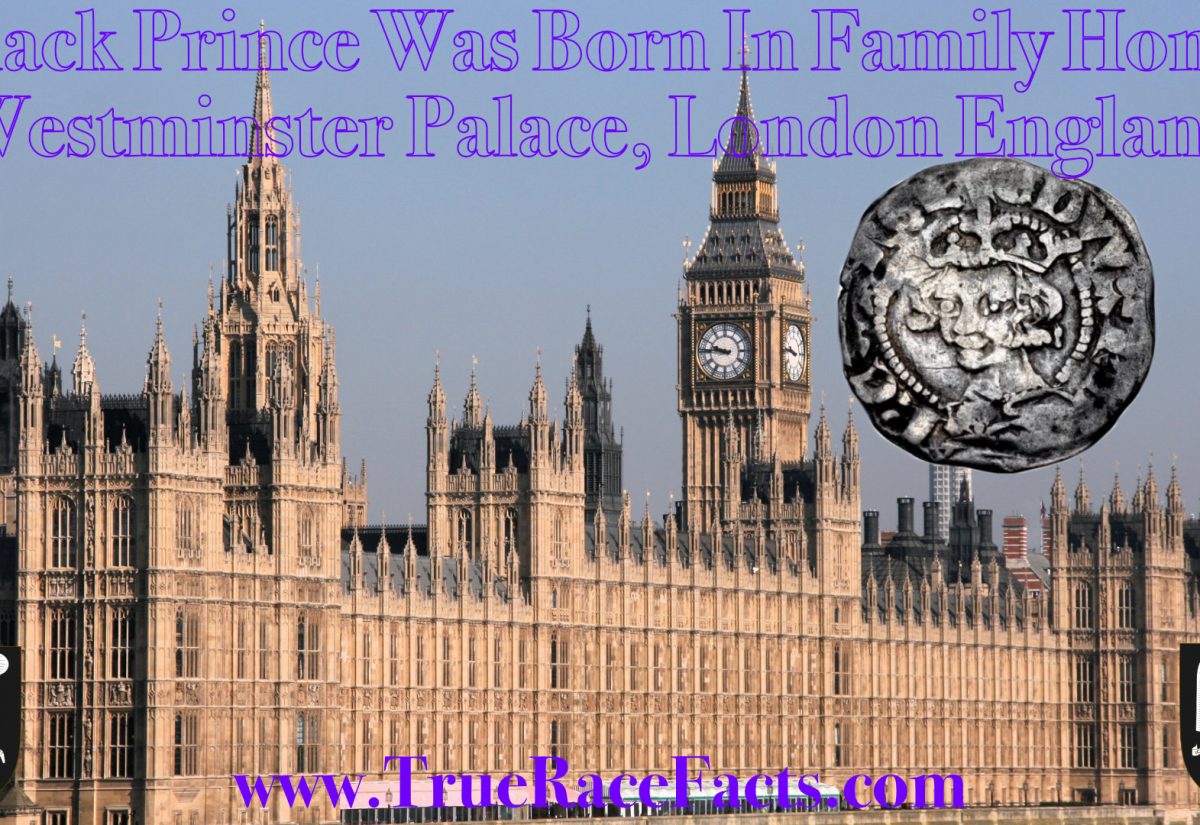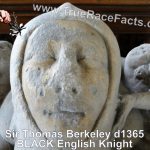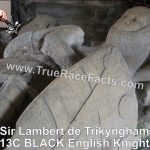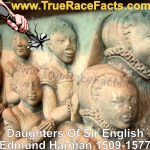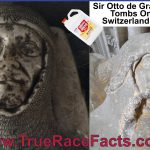1333c. Edward Of Woodstock – Black Prince Of England
- Guinevere Jackson
- 17 August 2022
- 0 Comment
The identity thieves claim that Prince Edward of Woodstock, The Black Prince, is called BLACK because he likes to wear black clothing. This deception is to hide from the FACTs that he was a so-called black man. His monument inside Canterbury Cathedral, Kent, England, has been heavily restored or replaced to make him look like an Edomite/Caucasian. The coins are the only accurate depiction of how he would’ve looked because he approved them in his likeness before they were issued to the public. When I visited Canterbury Cathedral, I took less than one minute to look at the FAKE monument, shook my head in disgust at the deception then walked away. Anything that is in perfect condition should be considered deceptive.
Most artefacts, 99.999% from medieval times to the mid-17th century, have been destroyed, restored, sanded down, whitewashed, bleached etc. The deception runs deep, and the great deceivers and cultural vultures deem this deception as part of their covert war loot and use the lies to promote their pseudo supremacy. Caucasians did NOT rule or have prominent positions during those periods. In the same way, my race in the West has little power today. The same applied to the Edomite/Caucasians.

Prince is “Edward The Black Prince, also called Edward Of Woodstock, Prince D’aquitaine, Prince Of Wales, Duke Of Cornwall, Earl Of Chester, (born June 15, 1330, Woodstock, Oxfordshire, Eng.—died June 8, 1376, Westminster, near London), son and heir apparent of Edward III of England and one of the outstanding commanders during the Hundred Years’ War, winning his major victory at the Battle of Poitiers (1356). His sobriquet, said to have come from his wearing black armour, has no contemporary justification and is found first in Richard Grafton’s Chronicle of England (1568).
Edward was created Earl of Chester (March 1333), Duke of Cornwall (February 1337)—the first appearance of this rank in England—and Prince of Wales (May 1343); he was Prince of Aquitaine from 1362 to 1372. His first campaign was served under his father in northern France (1346–47), and at the Battle of Crécy (Aug. 26, 1346) he won both his spurs and the famous ostrich plumes and with them the mottoes used by himself and subsequent princes of Wales, homout; ich dene (“Courage; I serve”; the words are here spelled as Edward himself wrote them; later variants include houmout and ich dien or ich diene). One of the original Knights of the Garter, he was sent to France with independent command in 1355, winning his most famous victory over the French at Poitiers on Sept. 19, 1356. The French king John II, brought captive to England, was treated by the prince with a celebrated courtesy, but he was obligated to pay a ransom of 3,000,000 gold crowns and to negotiate the treaties of Brétigny and Calais (1360) by which Aquitaine was ceded to the English.
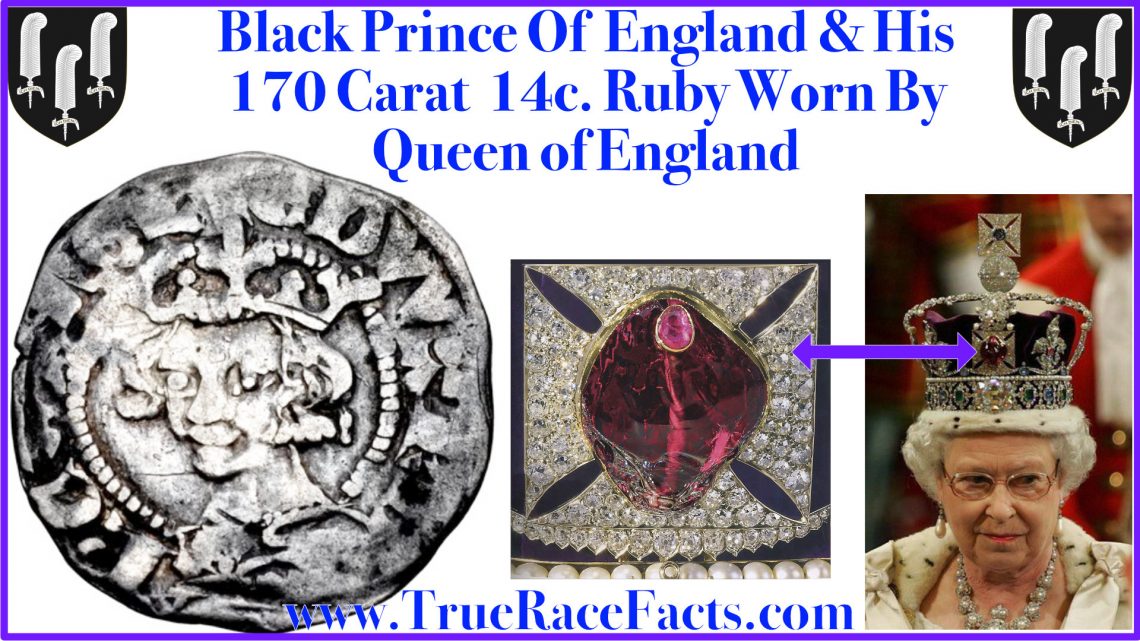
Edward married his cousin Joan, the divorced and widowed Countess of Kent, in October 1361. He was created Prince of Aquitaine in July 1362 and left England in 1363 to take up his duties. His powers and his opportunities were great, but his rule was a failure, and he himself was largely to blame. His court at Bordeaux, that of a foreign conqueror, was extravagant; the 13 sénéchaussées into which the principality was divided administratively followed their earlier French pattern and allowed local French loyalties to subsist; his relations with the many bishops were unfriendly, while the greater nobles, Arnaud-Amanieu, sire d’Albret, Gaston II, Count de Foix, and Jean I, Count d’Armagnac, were hostile. He summoned several estates, or parliaments, but always to levy taxes. In 1367 he undertook to restore Peter the Cruel of Castile to his throne, and though he won a classic victory at Nájera on April 3, 1367, the campaign ruined his health, his finances, and any prospect of sound rule in Aquitaine, where, in 1368, the nobles and prelates appealed against him to Charles V of France as suzerain. Edward’s reply to the French king’s citation to answer the appellants before the parlement of Paris in May 1369 is well known—he would appear with 60,000 men at his back. He had, however, alienated the towns and peasantry as well as the nobles; and by March 1369 more than 900 towns, castles, and strong places had declared against him. Relying on mercenaries whom he could not afford to pay, he was powerless to quell the revolt, and the terrible sack of Limoges (October 1370) merely redounded to his discredit. He returned to England a sick and broken man in January 1371 and formally surrendered his principality to his father in October 1372, alleging that the revenues of the country were insufficient to defray his expenses. He had no successor as Prince of Aquitaine.
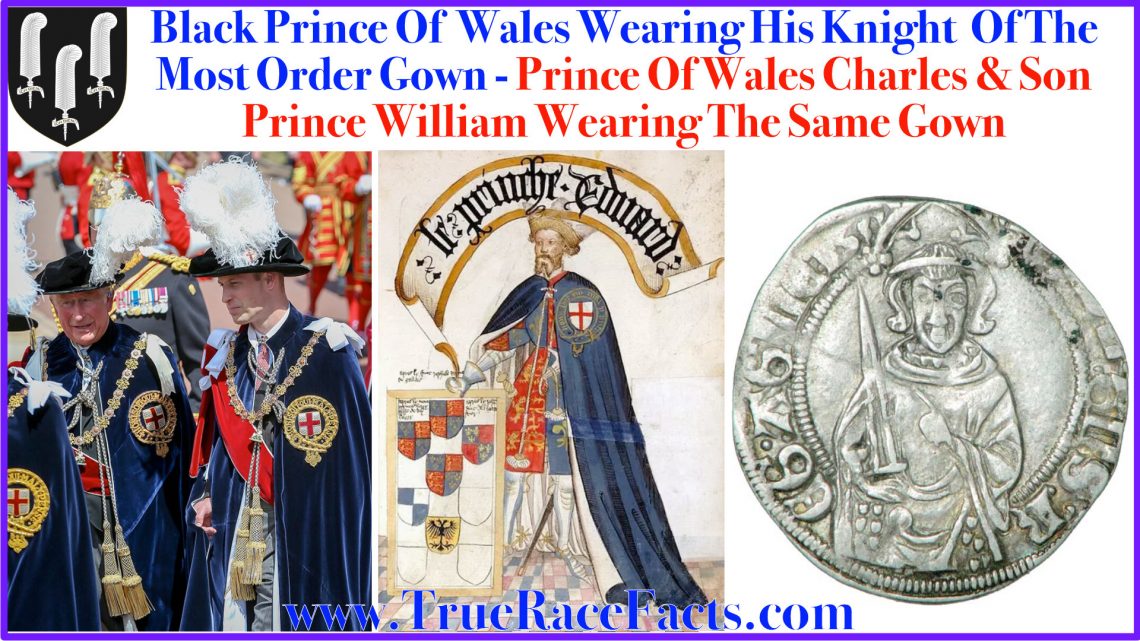
The Most Noble Order of the Garter, English order of knighthood founded by King Edward III in 1348, ranked as the highest British civil and military honour obtainable.
Edward’s position in England, where, throughout his life, he was heir apparent, was that of a typical 14th-century magnate. The registers of his household from 1346 to 1348 and from 1351 to 1365 have survived and add to what is known of him from the chroniclers and from his biographer, the herald of Sir John Chandos. In one important respect all of these sources paint the same picture, that of a man constantly living beyond his means. His generosity, however, extended to his tenants as well as to his knightly companions, and faithful service was rewarded, as in 1356 when the ferry of Saltash was granted to William Lenche, who had lost an eye at Poitiers.

The prince visited Chester in 1353 and again in 1358. Cheshire furnished many of his archers, who wore a rudimentary uniform of a short coat and hat of green and white cloth with the green on the right. Despite his title, however, Edward did not visit Wales.

He appears to have shared the interests of his class—jousting, falconry, hunting, gaming. He was literate and conventionally pious, substantially endowing a religious house at Ashridge (1376). He had the customary fine presence of the Plantagenets and shared their love of jewels. The Black Prince’s ruby in the present imperial state crown may or may not have been given to him by King Peter of Castile after the Battle of Nájera, but he would certainly have prized it, as a connoisseur. Similar artistic interest is shown in his seals, adorned with their ostrich feathers, and in the elegant gold coins that he issued as Prince of Aquitaine.

The last five years of the prince’s life are obscure. Some contemporaries suggest that he supported the Commons when political discontent culminated in the Good Parliament of April 1376; but he knew he was dying, and he was probably seeking the best means to ensure the succession of his second—but only surviving—son, Richard of Bordeaux (afterward Richard II). Edward was buried at Canterbury, where his tomb with his accoutrements, restored and renovated, still stands.” Article Source: www.britannica.com/biography/Edward-the-Black-Prince This is proof that his tomb is not in its original form but it’s been restored and renovated, in my opinion, to look caucasian for the sake of Edomite/caucasian supremacy.
“The greatest truth is honesty, and the greatest falsehood is dishonesty.” Abu Bakr
Article Citation: Shaw, Ivan Peter. “Edward The Black Prince”. Encyclopedia Britannica, Accessed 17 August 2022. Coins British Museum – Portrait of Black Prince National Portrait Gallery NPG D23706 – Black Prince Pub images from Black Prince Pub -Fair Use Not for commercial use.
Disclaimer: True Race Facts have made the long overdue honest determination that the King was dark brown, aka BLACK of the Hebrew, Shemitic negro race. Based on his facial phenotype, lips and thick braided hairstyle. Authentic original coins are the most accurate determination to identify the King because he would have approved the coins before they were hammered and issued. There are many ancient FAKE coins on the market, so beware when looking at coins. The deceivers made it their mission to cover up the dark ages, so even history should now be considered pseudo-history.


